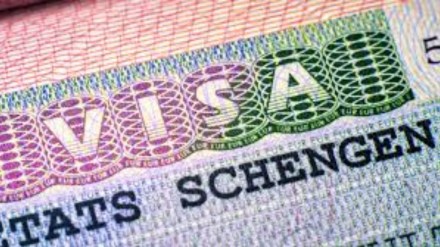If you’re planning a trip to Europe this year, be ready for a new process at the border. Starting October 12, 2025, the European Union will introduce the Entry/Exit System (EES). The process will replace the traditional passport stamp for most non-European visitors. The EES, however, will not change the way you apply for a Schengen visa.
According to this new system, every time you enter or leave the Schengen region, your details will now be stored digitally. This includes your photo, fingerprints, passport information, and exact entry and exit times. The update is meant to make travel more secure and efficient across Europe’s 29 Schengen countries.
What is the EES, and how does it work?
The EES is an electronic record-keeping system designed for travellers from outside the European Union, specifically for those who visit Europe for short stays. (Up to 90 days within a 180-day period.) Once the system launches, during your first visit, border officers will take your biometric data, which includes a photo of your face and fingerprints, instead of stamping your passport. This information will be stored digitally.
When you travel again, border control will simply match your fingerprints or face scan with the data already in the system, which is far less time-consuming. Once you’re inside the Schengen zone, you can continue to move freely between countries just as before.
Several European airports and land crossings will introduce self-service kiosks and e-gates to further speed up the process. Travellers with biometric passports can register their data at these kiosks before seeing an officer for final verification.
Some countries may also roll out mobile pre-enrolment apps. The process will allow you to upload your details before your journey. According to the officials, the aim is to cut waiting times and make the entry process smoother, especially during peak travel seasons.
Who needs to register under EES?
The new rule applies to all non-EU citizens visiting for short trips, this includes Indian passport holders. Whether you need a visa or not, each time you cross the border, your movement will be recorded in the EES. Indian travellers will still have to follow the usual process, which involves booking an appointment through VFS Global or BLS International.
However, Indians who already hold long-stay visas or residence permits for work, study, or family reasons won’t need to register under this system, as they are covered by separate immigration rules. Children under 12 will not have to give fingerprints but will still go through the rest of the process.
According to the EU, the EES will help with the modernisation of border management and improve security. Replacing physical stamps with a digital record should reduce human error, prevent overstays and make it easier for authorities to track visa-free entries. The EES officially starts on October 12, 2025. Slowly, the process will be passed on to the member countries. During the first few months, travellers may still receive passport stamps while the system is phased in. Member countries are aiming for a full implementation by April 2026.
Travellers’ fingerprints, facial photos, passport details, travel history, and visa status will all be stored in a secure EU database for up to three years. If you’re denied entry, that record will also appear in the system.
The EES is just one part of Europe’s digital border transformation. The ETIAS, a pre-travel authorisation similar to the U.S. ESTA, is expected to launch by the end of 2026, after multiple delays.
